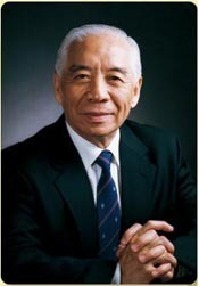| |
II. Large numbers of students studied in the Soviet Union and East Europe
 Wu Zuqiang
Wu Zuqiang
To learn the Soviet teaching approaches better and cultivate some key music teachers as soon as possible, foreign experts were employed to teach in China, while students were sent abroad to study in the Soviet Union and East European countries. In 1950s and early 1960s, CCOM sent 25 students to study abroad, majoring in composition, music theory, piano, harp, organ, violin, cello, woodwind and vocal music. In July 1952, Wu Zuqiang (composition) and Guo Shuzhen (vocal music) were the first group of students sent by CCOM to the Soviet Union; in 1953, Du Mingxin (composition) and Huang Xiaohe (violin, musicology) were sent to the Soviet Union. All of them studied in Moscow P.I. Tchaikovsky Conservatory. In 1954, Zhao Weijian (violin) was sent to Ciprian Porumbescu Conservatory of Music in Romania and Wang Yongxin (flute) was sent to Prague High School of Music in Czechoslovakia. In 1956, Zhao Songguang (acoustics) was sent to German Democratic Republic, Wu Tianqiu and Bao Guifang (vocal music) to Sofia National Academy of Music in Bulgaria, Yu Runyang (musicology) to University of Warsaw in Poland, and Meiliqige to the Soviet Union. In 1960, Lin Yaoji (violin), Sheng Zhongguo (violin), Zuo Yin (harp and organ), Liu Shikun (piano) and Zheng Xiaoying (conducting) were sent to Moscow P.I. Tchaikovsky Conservatory; meanwhile, Yin Chengzong, Zhao Bingguo (piano) and Bai Yu (oboe), Zhu Tongde (flute), Chen Genming (horn), and He Fuxing (clarinet) were sent to the Soviet Union Leningrad Conservatory of Music to study. In 1962, Han Li and Zhu Li (violin) were sent to the Soviet Union and Li Chunguang (music theory) to North Korea to study. Most of the students sent by CCOM abroad made outstanding academic achievements over years of hard study. For instance, Wu Zuqiang and Guo Shuzhen were awarded honors diploma in Moscow P.I. Tchaikovsky Conservatory in 1958. Most of them became key teachers in their schools after they came back. In the 1950s, other music academies in China also followed suit and sent students to study abroad, which enhanced their faculty base for their future development.
III. The translation of foreign music theories
To systematically learn from the music education experiences of the Soviet Union, the Chinese musicologists started to translate large numbers of foreign music theory books. They started from scratch and accumulated rich music materials in several years. In collection of materials, CCOM focused on the monographs of the Soviet Union. In March 1953, CCOM enhanced the translation division and assigned Zhu Shimin to be the division head. In October 1954, an office of foreign experts was established. To facilitate the teaching of the Soviet experts, many Soviet music books and syllabus from Soviet music academies were translated, such as Development Path of the Soviet Music, On Western European Musicians by Russian Musicians, Russian Music History (the mid-19th century), and Music and Aesthetic Issues of the Soviet Union.
A Music Research Division was set up in East Branch of CCOM soon after its establishment. Six knowledgeable personnel with foreign language proficiencies were chosen and employed to form a translation team in the research division. Under the leadership of He Luting, the dean of the Branch, a series of music theories and skills and historical biographies were published systematically, together with other music books and orchestral dictionaries, including “Harmonics” by Winston, “The Basic Theory of Music” and “The Basic Music Theory and Habits” by Sposobin, “Composition Method” by Gatena, “Harmonic Analysis” by Lehman, “Music Forms” by Plaut, “Modes and Law of Harmony” by Madeley Richardson, “Orchestra Method” by Jacques Gordon, and “The Biography of Handel” by Roman Roland. The above translations provided precious materials for the teaching, research and spreading of music in higher education in 1950s and 1960s.
|
|
